Fed to start buying commercial paper
Ben Bernanke opened the door to further US interest rate cuts on a day that saw the Federal Reserve moving to bypass banks and lend directly to US companies in an unprecedented attempt to unfreeze the money markets - 18:47
Wall St down after Fed liquidity plan
Financials lead losses - 18:16
Russia lends banks $37bn to stem crisis
Move follows steep falls in Moscow markets - 12:50
RBS and HBOS plunge on funding fears
RBS denies it asked government for capital - 17:18
Sullivan blames ‘mark to market’ for AIG’s woes
Accounting rule had ‘unintended effect’ - 15:38
GM cuts production in Europe
Credit crisis takes toll on car demand - 18:07
AMD spins off plants in $8.4bn Abu Dhabi deal
New partnership to build $3.2bn manufacturing plant - 13:16
Related content and features
Video
US Daily View: Fed to buy commercial paper
Aline van Duyn on the Fed’s unprecedented plan to buy unsecured debt in the commercial paper market
View from the Top: Mikhail Shamolin
The CEO of MTS says the credit crunch will soon be over and the crisis is presenting opportunities as well as dangers
Lessons from Turkey’s banking rescue
Kemal Dervis of the UNDP talks about what the IMF can do now to help the global economy
Spain announces emergency fund
Spain became the latest European nation to take unilateral measures to deal with the world’s deepening financial crisis, announcing a €30-50bn emergency fund to provide liquidity to the financial system by buying Spanish bank assets - Oct 7 2008
Fed to start buying commercial paper
Bernanke opens door to rate cut - Oct 7 2008
RBS and HBOS plunge on funding fears
RBS denies it asked government for capital - Oct 7 2008
Russia lends banks $37bn to stem crisis
Move follows steep falls in Moscow markets - Oct 7 2008
Markets routed in global sell-off
Dow falls below 10,000 - Oct 7 2008
Related content and features
Interactive
State to the rescue
As the global financial crisis deepens, governments have intervened to save ailing banks and in some cases have take over previously public companies. Our interactive graphic shows the value of government assistance in recent weeks
Interactive feature: Are European banks too big to fail?

This interactive map explores the relative size of business and government. Update to shows tier 1 capital ratios for each bank, and household debt levels as percentage of GDP
Regulating short selling
Short sellers were blamed for contributing to a sharp fall in financial stocks in recent months. Our interactive graphic looks at how regulators around the world have recently targeted the practice
Comment
Conservatism overshoots its limit

Ideas become fashionable and get pushed to their logical conclusion, as their backers succumb to “irrational exuberance”. Then comes the crash, writes Gideon Rachman - Oct-06
Tony Jackson: New panic is proof of big league crisis
Monday’s fresh outburst of panic on global markets was final proof that as financial crises go, we are now in the big league. Comparisons with the dotcom bubble or even the Asian crisis of 1997 are inadequate. We must think of 1987 or 1929, writes Tony Jackson - Oct-06
David Cameron: We will help give banks capital
Conservatives support government action when the foundations of the banking system are threatened, writes David Cameron - Oct-05
A global downturn in western power
Who are the likely political losers and winners – that is, those who lose the least – from the present financial mess, asks Dominique Moisi - Oct-05
Inadequate cover

As a company that made pricing risk its speciality, AIG failed spectacularly to see trouble looming in the business it did with Wall Street banks - Oct-06
How an Asian bond could save us from the weak dollar
Asia’s reserves could be turned into Asia bonds that, without losing value, could stimulate trade and investment in Asia, writes Thaksin Shinawatra - Oct-06
It is time to abandon imprudent caution

Gordon Brown must take more risks. This crisis demands a politician ready to anticipate rather than respond to events, writes Philip Stephens - Oct-06
Europe: In it together

Governments moved quickly to rescue failing banks but there are doubts in their ability to mount a co-ordinated response to a new phase in the crisis - Oct-03
Editorial Comment
Time to get the lights back on - Oct-03
Europe’s banking confidence crisis - Oct-01
Failure and blame game - Sep-30
Lex
Markets and cannon - Oct-06
European banks - Oct-06
Thrust and Pari - Oct-06
Corporate borrowing - Oct-06
More stories
Fed takes steps to bolster liquidity - Oct-06
Fed to hold CDS clearance talks - Oct-07
Iceland takes emergency action - Oct-07
Trading in Brazil suspended twice - Oct-06
EU resists plan for bail-out fund - Oct-06
Wall St down after Fed liquidity plan
By Alistair Gray in New York
Published: October 7 2008 14:03 | Last updated: October 7 2008 18:16
Wall Street stocks were lower on Tuesday as investors weighed Federal Reserve plans to create a commercial paper funding facility against the absence of rate cuts by world central banks.
General Electric and American Express – among the largest direct issuers of commercial paper, according to Bloomberg – were among the biggest winners from the Fed’s announcement. The pair rose 3.2 per cent at $22.07 and 3.7 per cent at $31.19, respectively.
The Fed’s intervention in the commercial paper market, which is widely used by large companies to raise short-term finance, is designed to boost much-needed liquidity.
Yet financials overall, down 4.3 per cent, led the market lower as money markets remained in paralysis.
Bank of America lost 15.6 per cent to $27.19 after the bank became the first Dow component to disclose quarterly results for the new reporting season. After the close of the previous session, the bank said it would raise $10bn in capital and halve its dividend.
Morgan Stanley and JPMorgan fell 12.6 per cent to $20.54 and 4.5 per cent to $42.03 respectively.
Merrill Lynch slid 13.6 per cent at $20.91 after Wachovia widened its third quarter loss estimate from $1.03 to $6.12 a share.
For much of on Tuesday morning, the Dow Jones Industrial Average teetered around the psychologically significant 10,000 barrier breached in the previous session after a four-day run of heavy losses.
By midday in New York, the Dow stood 1.2 per cent lower at 9,837.38 while the S&P 500 was 1.6 per cent down at 1,039.93. The Nasdaq Composite index fell 1.8 per cent to 1,828.52.
In technology, Google fell 1.4 per cent to $365.80 after Stifel Nicolaus cut its price target on the internet search group from $600 to $525.
IBM gave up 2.3 per cent to $98.31 after Barclays cut its recommendation on the stock from “overweight” to “equal-weight” due in part to its heavy exposure to the financial sector.
The energy, industrial and material sectors helped put a lid on the declines, up 1.3 per cent, 0.5 per cent and 0.8 per cent respectively.
Alcoa added 0.7 per cent to $18.24 ahead of its results due after the close. Analysts expect the aluminium producer, hit by lower prices, to report another quarterly profit decline.
An oil price recovery lifted energy stocks, such as Exxon Mobil and Chevron Corp, which rose 3 per cent at $79.67 and 1.1 per cent at $77.67, respectively.
First Solar fell 11.7 per cent to $141 and Sunpower fell 9.6 per cent to $50.03 after Goldman Sachs said solar power companies would be hurt as some governments cut subsidies for the technology. Goldman removed First Solar from its “conviction buy” list and cut its recommendation on both stocks to “sell”.
Yet the oil price rise hurt shares in some airlines. UAL Corp the parent company of United Airlines lost 14.3 per cent at $5.74 and Continental 12.8 per cent at $11.73.
In automotives, Ford and General Motors lost 13 per cent at $3.21 and 5.3 per cent at $8.03 respectively after the pair both warned they would cut output in Europe.
Illinois Tool Works lost 3.2 per cent to $37.85 after the manufacturer lowered third quarter and full-year forecasts due in part to weakness in North American industrial production.
Meanwhile in retail, Safeway rose 5.8 per cent to $23.04 on the back of better-than-expected third quarter earnings.
In consumer discretionaries, Walt Disney eased 2.9 percent to $27.45 after Merrill Lynch downgraded the the world’s biggest theme-park operator from “neutral” to “underperform”
The Chicago Board Options Exchange Volatility index, known as Wall Street’s fear gauge, fell 7.9 per cent, although at 47.92 it continued to indicate signs of extreme distress.
Tobias Levkovich, an erstwhile bullish analyst at Citigroup, cut his year-end forecast on the S&P from 1,475 to 1,200 due to “the anxiety generated by collapsing international stock markets, weaker economies around the world.”
Fed funds futures on Tuesday showed a 100 per cent probability that the Fed would cut interest rates at its meeting later in the month, and a 50 per cent probability it would cut rates by three-quarters of a percentage point.
Russia lends banks $37bn to stem crisis
By Catherine Belton in Moscow
Published: October 7 2008 12:50 | Last updated: October 7 2008 12:50
Russia said on Tuesday it would pump $37bn in long-term subordinated loans into state-controlled banks in a new measure to fight off a deepening financial crisis that has seen the steepest losses ever on the Russian stock exchange.
Dmitry Medvedev, the Russian president, announced the measure to pump five-year loans via the two biggest state banks, VTB and Sberbank, after an emergency meeting with the heads of the biggest state banks to discuss what he called “a large scale financial crisis”.
Investors said the move would provide much needed longer term liquidity into the banking system and could revive money markets that have frozen in what one fund manager called a “vicious cycle of fear.”
Shares rose in Moscow and London, with the rouble-denominated RTS index up 2.9 per cent, but remained extremely volatile.
The emergency measure comes after the benchmark RTS posted its steepest loss in its 13-year history on Monday, plummeting 19.1 per cent, while the Micex fell 18.7 per cent.
The steep falls have sent stocks spinning to their lowest levels since 2004 and erased all the gains made since Russia unveiled a $100bn-plus rescue package on September 19 aimed at restoring investor confidence.
The state rescue funds so far have been mainly pumped in as short-term deposits in the biggest banks, but failed to break a growing crisis of confidence, exacerbated by the global financial turmoil and falling commodity prices. Banks had been hoarding the cash instead of lending it on, analysts said.
The liquidity crunch has provoked a wave of panic selling, exacerbated by fears that Russia’s richest oligarchs may be forced to dump stocks because they are unable to raise cash to meet margin calls as the value of collateral pledged for tens of billions of dollars in loans plummets.
Speculation that Oleg Deripaska, Russia’s richest man, could be forced to sell his 25 per cent stake in Norilsk Nickel, the world’s biggest nickel miner – which has been pledged as collateral for a $4.5bn loan – sent the London-traded stock down 44 per cent on Monday.
Mr Deripaska had last week been forced to divest his 20 per cent stake in Magna, the Canadian car parts maker, to creditors after a wave of margin calls. Mr Deripaska’s UC Rusal insisted in a statement on Tuesday that it would not sell the Norilsk stake.
Shares in Rosneft, the state-controlled oil major, lost 41 per cent on Monday on fears that the fall in value of its shares put it in breach of covenants on a $1.8bn loan. A person close to Rosneft on Tuesday denied this was the case.
Meanwhile Gazprom, the state-controlled gas giant, lost one quarter of its value on Monday.
“There is currently little rhyme or reason to trading in the Russian stock market,” Chris Weafer, chief strategist at Uralsib investment bank, wrote in a research note on Monday. “It is as if investors are aggregating the total sum of their fears concerning the global and domestic economies. Worst-case scenario, and then some.”
RBS and HBOS plunge on funding fears
By Michael Hunter
Published: October 7 2008 08:45 | Last updated: October 7 2008 17:18
Banks were once again under pressure in London on Tuesday amid worries about the health of the financial sector, but the broader market closed fractionally higher after a volatile session.
HBOS and Royal Bank of Scotland were the heaviest fallers – closing down 41.5 per cent to 94p and 39.2 per cent at 90p, respectively. The HBOS price represented a 50 per cent discount to the terms of the offer from Lloyds TSB. Shares in Lloyds closed down12.9 per cent at 225½p.
Sullivan blames ‘mark to market’ for AIG’s woes
By Stephanie Kirchgaessner in Washington
Published: October 7 2008 15:38 | Last updated: October 7 2008 15:38
Martin Sullivan, former chief executive of AIG, the insurance giant that was rescued by the US government, on Tuesday blamed a single accounting rule for the company’s travails.
In written testimony released before he was set to testify before Congress, Mr Sullivan said that “multiple actions by multiple parties” created the “unprecedented financial market disruption” that caused his firm’s near-collapse and eventual $85bn bail-out by the US Treasury.
GM cuts production in Europe
By John Reed in London and Bernard Simon in Toronto
Published: October 7 2008 18:07 | Last updated: October 7 2008 18:07
General Motors is cutting production at most of its 10 manufacturing plants in Europe in a stark sign of the growing toll the credit crisis is taking on demand in the real economy. GM said on Tuesday it was halting production or cutting shifts at the plants for between 10 days and three weeks in response to lower sales of its Opel, Vauxhall and Saab cars.
“The financial crisis is affecting the vehicle market,” Opel said.
AMD spins off plants in $8.4bn Abu Dhabi deal
By Chris Nuttall in San Francisco
Published: October 7 2008 07:47 | Last updated: October 7 2008 13:16
Advanced Micro Devices plans to spin off its chip plants and receive a lifeline of up to $8.43bn from Abu Dhabi as it struggles to compete with its larger microprocessor rival Intel.
AMD confirmed on Tuesday a long awaited ”asset-light” strategy that will relieve it of the burden of trying to maintain manufacturing parity with its Silicon Valley neighbour.
-
-
-
-
- More
- Tuesday, October 7, 2008 As of 1:53 PM EDT
-
top stories in Markets
- 1 of 10
![[A trader works on the floor of the New York Stock Exchange, Oct. 6, 2008.]](http://s.wsj.net/public/resources/images/OB-CL802_market_A_20081006221931.jpg)
Stemming the Crimson Tide
- 2 of 10
![[Ebay Inc. headquarters in San Jose, Calif.]](http://s.wsj.net/public/resources/images/OB-CL799_ebayhe_A_20081006221311.jpg)
EBay Shows Web Firms Are Normal
- 3 of 10
![[RBS Barclays Lloyds]](http://s.wsj.net/public/resources/images/OB-CL840_heardu_A_20081007105702.jpg)
Playing Hardball With U.K. Banks
- 4 of 10
Australian Rate Cut a Template
- 5 of 10
![[Mitsubishi]](http://s.wsj.net/public/resources/images/OB-CL838_mitsub_A_20081007104116.jpg)
Japan Auto Profits May Skid On Euro
- 6 of 10
The Battle for Wachovia
- 7 of 10
![[Gordon Brown, Angela Merkel]](http://s.wsj.net/public/resources/images/OB-CL690_merkbr_A_20081006134357.jpg)
Shoring Up European Confidence
- 8 of 10
![[Hypo Real Estate]](http://s.wsj.net/public/resources/images/OB-CL692_hypo_A_20081006135148.jpg)
Germany's Hypo-thermia
- 9 of 10
![[China Stocks in Shanghai]](http://s.wsj.net/public/resources/images/OB-CL679_chinah_A_20081006130325.jpg)
China Market Regulator's Contrarian Move
- 10 of 10
![[Disney]](http://s.wsj.net/public/resources/images/OB-CL612_disney_A_20081005222602.jpg)
Disney's Magic Is Starting to Wear Thin
Breaking News
Federal Reserve officials at their September meeting believed the risks from weaker growth and higher inflation were roughly equal.
-
Rescue Doubts Plague Markets
The Dow's fall below 10000 reflects investors' lack of confidence despite stepped up relief efforts by the Fed and European governments. Asian markets staged a recovery Tuesday, helped by a rate cut in Australia, but European indexes were volatile as fears mounted about the banking sector's health.
-
![[A trader at the New York Stock Exchange shows the stress Monday as the Dow Jones Industrial Average dropped as much as 800.06 points, the largest intraday decline in history. It rallied to close down 369.88 points.]](http://s.wsj.net/public/resources/images/P1-AN176_Stocks_A_20081006183554.jpg)
Investors Succumb to Fears of Recession
The Dow industrials fell below 10000 and European stocks fell to 20-year lows, a stark sign that the crisis may be outpacing policy makers' ability to contain it. Asian markets staged an intraday recovery Tuesday to close mostly higher, helped by a rate cut in Australia. European stocks reversed opening gains.
-
Fed to Purchase Commercial Paper
Subscriber Content Read Preview
Taking a big new leap in its efforts to stem the financial crisis, the Federal Reserve said it would step in to backstop the commercial paper market. (Statement)
-
![[traders]](http://s.wsj.net/public/resources/images/OB-CL870_stocks_A_20081007124552.jpg)
Market's Slide Deepens
The Dow industrials fell more than 250 points as selling gathered steam. Bank stocks were hit especially hard, with Bank of America declining 18%.
-
FDIC Wants to Raise Bank Premiums
Subscriber Content Read Preview
The FDIC proposed charging banks higher premiums to insure protected deposits due to the continuing turmoil in the banking industry and the likelihood of more banks failing.
-
![[Neel T. Kashkari during confirmation hearings before the Senate Banking Committee in June.]](http://s.wsj.net/public/resources/images/P1-AN175_Rescue_A_20081006184159.jpg)
Regulators Outline Steps to Quell Crisis
Worsening market turmoil prompted U.S. financial regulators to outline steps they are using to boost the balance sheets of institutions reeling from the crisis.
-
![[A branch of Landsbanki Bank in Reykjavik.]](http://s.wsj.net/public/resources/images/OB-CL812_icelan_A_20081007074633.jpg)
Iceland Scrambles to Shore Up Finances
Subscriber Content Read Preview
Iceland nationalized its second-largest bank and is negotiating a loan from Russia to shore up the nation's finances amid a full-blown financial crisis.
-
![[Shoichi Nakagawa]](http://s.wsj.net/public/resources/images/OB-CL833_jfinan_A_20081007102631.jpg)
Japan's Finance Chief Urges U.S. Action
Subscriber Content Read Preview
Japan's new finance minister urged the U.S. to take steps to quickly stabilize its financial system, noting such efforts are important not only for the U.S. but for the rest of the world as well.
-
![[From left to right: French Finance Minister Christine Lagarde and her counterparts of Belgium Didier Reynders and Portugal Fernando Teixeira dos Santos.]](http://s.wsj.net/public/resources/images/OB-CL823_ecofin_A_20081007094452.jpg)
EU Creates Bailout Guidelines
Subscriber Content Read Preview
European Union finance ministers agreed to a set of principles that will guide potential bailouts of banks and insurance companies, but stopped short of setting up a bloc-wide, U.S.-style support fund.
-
![[Europe Races to Shore Up Banks]](http://s.wsj.net/public/resources/images/EI-AR375_EUbank_A_20081006174818.jpg)
EU Fights Irrelevance in Crunch
Subscriber Content Read Preview
The EU tried to coordinate its response to the banking crisis, but markets slid amid questions about its members' ability to act as a bloc.
-
![[Standard Chartered]](http://s.wsj.net/public/resources/images/OB-CL814_Standa_A_20081007075548.jpg)
Standard Chartered Hires Lehman Staff
Subscriber Content Read Preview
Standard Chartered has hired several members of Lehman Brothers' Asia commodities trading team, as well as a private equity banker.
-
Firms Get 2 Days to Apply for Work on Rescue Plan
The Treasury Department is giving financial institutions two days to submit proposals to work as asset managers for the $700 billion rescue program.
-
![[Wachovia bank]](http://s.wsj.net/public/resources/images/OB-CL632_wachov_A_20081006092602.jpg)
Citi, Wells Fargo Take Breather
Subscriber Content Read Preview
Wachovia and suitors Citigroup and Wells Fargo agreed to a two-day truce as negotiators attempt a resolution. (Citi's lawsuit)
-
![[Image]](http://s.wsj.net/public/resources/images/OB-CL689_fuld2__A_20081006134154.jpg)
Lawmakers Lay Into Lehman CEO
Subscriber Content Read Preview
Lehman agreed to pay more than $23 million to three executives ousted just days before the firm collapsed. Lawmakers grilled CEO Fuld. (Prepared text)
-
Former AIG Executives to Testify
Subscriber Content Read Preview
Former executives at AIG are due on Capitol Hill to testify about how one of the world's largest insurers became so fragile.
-
Electronic Platform Proposed for CDS
Subscriber Content Read Preview
CME and Citadel plan to launch an exchange-like platform to trade and clear credit-default swaps, which have been at the heart of some of Wall Street's recent woes.
-
![[Russia Market photo]](http://s.wsj.net/public/resources/images/EM-AE620_Rusmar_A_20081006180000.jpg)
Russians Want Bailout of Bailout
Subscriber Content Read Preview
Russia's stock indexes fell well below levels seen before the government's $150 billion rescue plan last month.
-
![[A development property is for sale in Colton, in California's San Bernardino county.]](http://s.wsj.net/public/resources/images/P1-AN169A_SALVA_A_20081006171531.jpg)
California Tries to Avoid Second Housing Hit
Parts of Southern California hit hard by the housing crisis are maneuvering to shape Treasury's plan to buy up troubled assets so that it doesn't wind up causing a second wave of pain in their communities.
-
IRS Lets Firms Tap Cash Overseas
The IRS relaxed the rules governing how U.S. corporations can repatriate cash parked overseas in an effort to ease the credit crisis.
-
Smaller Oil Firms Feel Credit Crunch
Subscriber Content Read Preview
The credit crunch is forcing smaller European oil companies to sell assets and renegotiate debt, while turning the weak ones into acquisition targets.
-
![[A customer at Bank of America in New York. The bank agreed to settle claims over risky loans originated by Countrywide Financial.]](http://s.wsj.net/public/resources/images/NA-AS980_CWIDE_A_20081005203905.jpg)
BofA in Settlement Worth Over $8 Billion
Subscriber Content Read Preview
Bank of America has agreed to settle claims brought by state attorneys general regarding risky loans originated by Countrywide, in a deal that could be worth more than $8.6 billion.
-
![[Richard Fuld Jr.]](http://s.wsj.net/public/resources/images/OB-CL601_demise_A_20081005193018.jpg)
The Two Faces of Lehman's Fall
Subscriber Content Read Preview
Lehman's behind-the-scenes maneuvering prior to its bankruptcy filing raises questions about whether it crossed the line into misleading clients and investors.
-
![[Seth Glickenhaus]](http://s.wsj.net/public/resources/images/MI-AS744A_GLICK_A_20081005183436.jpg)
A '29 Veteran Gives '08 Prognosis
Subscriber Content Read Preview
Seth Glickenhaus, one of the few still on Wall Street who worked there during the Depression, thinks battered stocks are due to rebound, but he worries they could fall again later.
-
Asset Markdown Hits Equity Firm
Turnaround artist Christopher Flowers must bring his skills to the aid of his own J.C. Flowers private-equity firm.
-
![[Image]](http://s.wsj.net/public/resources/images/OB-CL663_kashka_A_20081006121455.jpg)
Paulson Taps Adviser to Run Rescue
Subscriber Content Read Preview
Paulson tapped key adviser Neel Kashkari to oversee Treasury's $700 billion program to buy distressed assets from financial institutions.
-
Caution, Inexperience Limit Asia's Clout
Subscriber Content Read Preview
The financial crisis in the U.S. has given Western financial firms a bigger role in global finance, but Asian institutions' caution could limit their newfound clout.
-
Oil Production to Increase in Asia
Asia is expected to significantly increase its own oil production next year, a development that could add to downward pressure on prices.
-
![[Wachovia]](http://s.wsj.net/public/resources/images/OB-CK483_wachov_A_20080926172309.jpg)
Legal Battle for Wachovia Heats Up
A judge temporarily blocked Wachovia's sale to Wells Fargo, while people familiar with the matter said Citigroup had offered last week to sweeten its bid for the bank.
-
![[sarkozymerkel]](http://s.wsj.net/public/resources/images/OB-CL591_sarkoz_A_20081004120401.jpg)
EU Leaders Vow to Boost Confidence
Trying to resolve their differences over how Europe should respond to the global credit crisis, four EU leaders pledged to restore confidence in the continent's financial institutions.
-
![[Bush photo]](http://s.wsj.net/public/resources/images/NA-AS959_BUSH_f_A_20081003205146.jpg)
Bush Leaves Successor Another Open-Ended Initiative
By signing the financial-rescue bill, Bush committed the U.S. to another bold initiative just three months before his term in office ends.
-
AIG Floats Plan to Sell Pieces
Subscriber Content Read Preview
Two weeks after receiving an $85 billion government credit line, AIG laid out a plan for significantly shrinking by selling assets to pay off the loan.
-
Iceland Hit by Bank Bailout Fears
The cost of insuring Icelandic government debt soared to punitive levels, while the country's currency dropped 8% against the euro since Monday.
-
![[Smaller hedge funds struggle]](http://s.wsj.net/public/resources/images/MI-AS724_WHEDGE_A_20081003230816.jpg)
Smaller Hedge Funds Struggle
Subscriber Content Read Preview
The past year has been brutal for hedge funds, and September looks to be the worst month in a decade in the industry, according to Hennessee Group.
-
![[paulson]](http://s.wsj.net/public/resources/images/OB-CL590_paulso_A_20081004093044.jpg)
Treasury to Act Soon
Bush signed the $700 billion bailout bill, one of the largest-ever government interventions in the economy. The Treasury is expected to move quickly to start buying distressed assets from struggling institutions.
-
![[J.P. Morgan Chase]](http://s.wsj.net/public/resources/images/OB-CL709_jpmorg_A_20081006141719.jpg)
Can Bailout Spur Lending?
Subscriber Content Read Preview
The House's second-try approval of the bailout legislation isn't likely to get banks, and debt investors, lending freely again Monday morning.
-
Familiar Abuses Seen in Latest Crisis
Subscriber Content Read Preview
U.S. prosecutors say they have uncovered familiar abuses in the financial crisis, including insider trading and fraud.
-
Office Space Is Emptying Out
Subscriber Content Read Preview
Nationwide, rents on office properties were flat in the third quarter, the worst result for office-property owners since late 2004.
-
![[Lobbying groups are playing an important role in shaping the financial rescue bill. President Bush speaks to business leaders about the crisis.]](http://s.wsj.net/public/resources/images/NA-AS931_INFLUE_A_20081002221556.jpg)
Bank Lobbyists Regained Clout
New FDIC insurance limits and provisions for credit unions were two big victories for the industry in the Senate rescue bill.
-
Riksbank Set to Tackle Credit Squeeze
Subscriber Content Read Preview
Sweden's central bank said it will offer $8.63 billion in three-month loans for banks.
-
![[EU Is Divided on Crisis Measures]](http://s.wsj.net/public/resources/images/NA-AS901_EUCRIS_A_20081001174530.jpg)
EU Is Divided on Crisis Measures
Subscriber Content Read Preview
France and Germany are split over how to handle the financial crisis, potentially deepening rifts within the EU.
-
U.S. Auction-Rate Investigation Picks Up Steam
The Justice Department is looking into whether Lehman defrauded clients as part of a probe into the collapse of the auction-rate market.
-
Deposits in Europe Flow to Secure Banks
Subscriber Content Read Preview
European efforts to prop up banking systems are creating a flight from banks that don't enjoy state largess.
-
Lawmakers Await Rescue Vote's Impact
The size and timing of the rescue plan made it the most consequential vote ever of many House members. But its political consequences are far from clear.
-
Colleges Scramble as Fund Is Frozen
Subscriber Content Read Preview
Colleges and schools are scrambling to make sure they have money for payroll and other bills after a fund they invested in froze withdrawals.
-
![[Angel-investor]](http://s.wsj.net/public/resources/images/OB-CL217_angel_A_20081002101123.jpg)
Entrepreneurs Scramble for Financing
Small businesses are turning to angel investors, suppliers and credit cards as the crisis spreads and access to commercial bank loans becomes more restricted.
-
![[Boehner, John]](http://s.wsj.net/public/resources/images/HC-GH769_Boehne_AV_20080930103647.gif)
Banks Push to Ease Accounting Rule
A proposal contained in the Senate's revised financial-rescue bill reaffirms the SEC's authority to suspend "mark-to-market" accounting.
-
![[Alfred Giammarino]](http://s.wsj.net/public/resources/images/MK-AS113_CFO_A_20081001184047.jpg)
How One CFO Battles the Crisis
Subscriber Content Read Preview
Alfred Giammarino's new job at FairPoint comes at a tough time. Wall Street's turmoil has put extraordinary stress on the people who secure money to keep corporate America afloat: CFOs.
-
Reserve Primary Fund Put in a Bind
Subscriber Content Read Preview
Reserve Primary Fund's investors could get much less than expected, with a troubled market weighing on assets.
-
![[Two women enter a branch of Wachovia bank in New York. Wachovia was taken over by Citigroup in a deal brokered by the FDIC.]](http://s.wsj.net/public/resources/images/P1-AN114_BANKIN_A_20080930194027.jpg)
Loyalty Pays a Bitter Dividend
The financial crisis is overwhelming some of America's most loyal investors: individuals who've held on to bank stocks for years or even generations.
-
Securities Lending Is Squeezed
Subscriber Content Read Preview
Public pension funds and other big investors that made money by lending stock in their portfolios are feeling squeezed by the financial turmoil.
-
Scramble for a Rescue Is On
The capital's biggest lobby groups are proposing policy changes intended to propel the embattled financial rescue plan toward passage.
-
![[EU Is Divided on Crisis Measures]](http://s.wsj.net/public/resources/images/NA-AS901_EUCRIS_A_20081001174530.jpg)
EU Is Divided on Crisis Measures
Subscriber Content Read Preview
France and Germany are split over how to handle the financial crisis, potentially deepening rifts within the EU.
-
![[House Minority Leader John Boehner of Ohio]](http://s.wsj.net/public/resources/images/NA-AS880_SALEpi_A_20080930184710.jpg)
Rescue Proponents Didn't Make the Sale
The failure of bailout-plan proponents to overcome a hostile public reaction reflects a political vacuum ahead of the November elections.
-
Fate of Wachovia Brokers Is Unclear
Subscriber Content Read Preview
Questions persist about the viability of Wachovia's remaining businesses and whether they can still be sold.
-
![[William M. Isaac]](http://s.wsj.net/public/resources/images/NA-AS879_ISSACp_A_20080930184537.jpg)
An Old Hand Counsels Lawmakers
Members of Congress are turning to FDIC veteran William M. Isaac as they search for alternatives to the Bush administration's financial-rescue plan.
-
Populism Fueled California 'No' Vote
Nearly half of California's congressional delegation voted against the bailout bill, an unlikely mix of left-leaning Democrats and conservative Republicans.
-
![[Should Investors Follow Brokers?]](http://s.wsj.net/public/resources/images/PJ-AN330_pjBROK_A_20080930181515.jpg)
Should Investors Follow Brokers?
Many small investors are now faced with a tough choice: Follow a departing broker to a new firm or stay put.
-
Farmer Mac Gets Capital Infusion
Farmer Mac lined up $65 million in new capital as it moved to stabilize itself, and appointed a board member as acting chief executive.
-
![[State, Local Tax Revenue Stagnates]](http://s.wsj.net/public/resources/images/OB-CK948_statem_A_20080930123844.jpg)
State, Local Tax Revenue Stagnates
Tax-revenue growth has slowed to a crawl in most states, increasing pressure on officials to cut spending or dip into reserves.
-
Businesses Push for Bailout Plan
Subscriber Content Read Preview
Business leaders and trade groups urged Washington to enact a financial-markets rescue plan, warning that inaction would have dire consequences.
-
Europe Leaders Scramble
Subscriber Content Read Preview
European leaders' disappointment over the failed $700 billion U.S. financial-bailout package was mixed with hope it could be revived later this week.
-
Candidates Sidestep Vote Fallout
McCain and Obama struggled to turn House rejection of the financial rescue package to their own advantage, each blaming the failure on the other's party.
-
![[No Celebration for Lobbyists]](http://s.wsj.net/public/resources/images/NA-AS846_LobbyP_A_20080929175722.jpg)
No Celebration for Lobbyists
The financial-services industry's lobbyists had won important victories until the bailout package's defeat in the House. Now they are wondering how to get the deal passed.
-
Democratic Opposition Came From Wide Spectrum
In a sign of the difficulty lawmakers faced as they voted on the financial-rescue plan, many of the House Democratic factions split sharply on the bill.
-
Vote Deals Economy Another Blow
The bailout's defeat could further weaken an economy already hurt by a crisis of credit and confidence.
-
![[Fed, Treasury Must Use Same Old Loan Programs]](http://s.wsj.net/public/resources/images/NA-AS845_PLANB_A_20080929174810.jpg)
Fed, Treasury Left With Familiar Arsenal
Subscriber Content Read Preview
With the House's rejection of the bailout plan, the Fed and Treasury are stuck for now with tools that have been ineffective at stemming the financial crisis -- or that could provoke battles with Congress.
-
Bain, Hellman Buy Neuberger
Subscriber Content Read Preview
Lehman reached an agreement to sell its Neuberger Berman unit to private-equity firms Bain Capital and Hellman & Friedman for $2.15 billion.
-
![[Governments bail out Fortis]](http://s.wsj.net/public/resources/images/OB-CK650_forist_A_20080929043251.jpg)
Governments Rescue Fortis
Subscriber Content Read Preview
Fortis became the latest target of a government rescue, with Belgium, Luxembourg and the Netherlands offering the bank a $16.37 billion lifeline after it failed to find a buyer.
-
Regional Banks Slammed
Subscriber Content Read Preview
Smaller banks were hit hard in trading even before the House voted to reject the financial-bailout package.
-
![[Freddie CEO David M. Moffett]](http://s.wsj.net/public/resources/images/OB-CK880_freddi_A_20080930081253.jpg)
New Probes of Fannie, Freddie
Subscriber Content Read Preview
Fannie Mae and Freddie Mac said they received grand-jury subpoenas seeking data on accounting, disclosures and corporate-governance matters.
-
![[The ECB launched a special term refinancing operation aimed at improving the overall liquidity position of the euro-zone banking system.]](http://s.wsj.net/public/resources/images/OB-CK653_centra_A_20080929055148.jpg)
Central Banks Step Up Action
Central banks added $330 billion dollars to the funds they can pump in into money markets as more financial institutions ran into trouble in Europe and the U.S.
-
![[Dealing with Debt]](http://s.wsj.net/public/resources/images/OB-CK806_little_A_20080929160759.jpg)
Dealing With Debt That Refuses to Die
A court ruling requires credit bureaus to clean up the credit files of millions of consumers who have filed for Chapter 7 bankruptcy.
-
![[Deposit photo]](http://s.wsj.net/public/resources/images/MI-AS604_WDEPOS_A_20080926171408.jpg)
With J.P. Morgan, Many WaMu Customers Relax
Subscriber Content Read Preview
Consider it a case of failing up. As WaMu came into the fold of J.P. Morgan on Friday, many customers the country were calm, even upbeat about the new home for their accounts.
-
WaMu Fall Crushes TPG
Subscriber Content Read Preview
TPG's bad bet illustrates the peril of investing in distressed banks.
-
WaMu Sale Reflects Well on FDIC
Subscriber Content Read Preview
Brokering the sale of Washington Mutual without putting a dent in the roughly $45 billion deposit-insurance fund is a big achievement for FDIC Chairman Sheila Bair.
-
AIG Won't Seek Shareholder Approval on Government Deal
Subscriber Content Read Preview
AIG said that it will give the government control of 80% of the company without seeking shareholder approval.
-
Fannie Seeks Speedier Bank Transfers
Subscriber Content Read Preview
Fannie Mae is requiring some banks to speed up transfers of mortgage payments to investors in a precaution arising from the current wave of bank failures.
-
![[Sen. Roger Wicker]](http://s.wsj.net/public/resources/images/OB-CK371_rogerw_A_20080926095229.jpg)
Incumbents Face Tough Vote, Backlash
Several Republican senators in close races now find themselves facing a vote on the Wall Street rescue plan that they wish they didn't have to cast.
-
![[Short-selling ban casts wide net]](http://s.wsj.net/public/resources/images/MI-AS578_SECSHO_A_20080925214438.jpg)
SEC Ban Casts Wide Net
Subscriber Content Read Preview
NYSE and Nasdaq representatives say the exchanges have been reviewing requests from listed companies to be added to the no-short list.
-
Stocks Give Muddled View of Crisis
Subscriber Content Read Preview
The stock market has seemed out of sync with the credit crisis embroiling the financial system.
-
Swedbank Feels Fallout From Lehman
Subscriber Content Read Preview
Shares of one of Swedbank tumbled amid concerns about whether the loans it made to Lehman would be paid back.
-
Lawmakers Weigh Political Risks of Bailout
Rank-and-file lawmakers face a crucial election-year question: If they back the bailout proposal, will they pay at the polls?
-
Investment Bank Borrowing Soars
Subscriber Content Read Preview
Investment bank borrowing from the Fed's expanded discount window soared to new highs in the latest week. Meanwhile, a loan to AIG on Wednesday totaled $44.57 billion.
-
Oil Trades Migrate to Exchanges
Subscriber Content Read Preview
Privately struck oil trades are migrating onto exchanges as Wall Street's crisis stokes fears of counterparty risk.
-
SEC Presses Hedge Funds
Subscriber Content Read Preview
The SEC ordered over two dozen hedge funds to turn over trading data amid a probe into whether rumors were spread to manipulate shares.
-
![[Federal Reserve Chairman Ben Bernanke prepares to testify about the Bush administration's bailout plan on Capitol Hill on Wednesday before the Joint Economic Committee.]](http://s.wsj.net/public/resources/images/NA-AS743_AUCTIO_A_20080924203328.jpg)
How Auctions Might Be Structured
Subscriber Content Read Preview
The current situation makes it particularly thorny for the government to set up an effective auction.
-
U.S. Firms Gird for Hits, Draw On Credit
Fearful of tightening credit and bank failures, a growing number of companies are hoarding cash by tapping credit lines they don't actually need.
-
Demand for Short-Term Treasury Debt Cuts Supply
Subscriber Content Read Preview
Investors sought safe haven in Treasurys amid continuing uncertainty about the U.S. government's bailout plan for the financial sector and ongoing short-term funding pressure.
-
![[Paulson faces test]](http://s.wsj.net/public/resources/images/OB-CK123_paulso_A_20080924191300.jpg)
Paulson's Deal-Making Skills Face Test
Paulson spent 32 years striking deals on Wall Street. Now he faces his ultimate test as he tries to persuade Congress to pass his bailout plan.
-
Unions Seek Pension Protections in Bailout
Subscriber Content Read Preview
Organized labor wants Congress to add to any bailout plan more protections for workers' pensions battered by the market meltdown.
-
Congress Weighs Tax Relief for Banks
Subscriber Content Read Preview
Congress is considering giving billions of dollars in special tax relief to banks that suffered losses related to the federal takeover of Fannie and Freddie.
-
Taking Stock: U.S. Should Trade for Aid
Subscriber Content Read Preview
Ben Bernanke told Congress that, to bail out banks, it might buy mortgage-backed securities at "hold to maturity" prices, but many of the underlying mortgages have already defaulted or are in foreclosure.
-
![[President George W. Bush]](http://s.wsj.net/public/resources/images/OB-CK148_bushhe_A_20080924221500.jpg)
Bailout's Flaw of Large Numbers
Berkshire Hathaway's investment in Goldman Sachs provides a template for how to get the financial system back on its feet, but the Bush administration's $700 billion bailout plan ignores some of the key lessons of the deal.
-
Bailout May Aid Bank Balance Sheets
The Treasury's rescue plan could bolster bank balance sheets, as soured mortgage assets would be purchased for a premium.
-
FBI Probes Companies at Center of Crisis
The FBI opened preliminary inquiries into Fannie Mae, Freddie Mac, Lehman and AIG over whether fraud caused some of their troubles.
Deal Journal
- In Crisis, Managing Money Becomes the Most Popular Game in Town
In times of crisis, people often look for comfort foods that remind them of stability. Financial institutions are no different, except they often seek out businesses that manage assets, not carbs, in search of stable revenue and more assets that stick around in a crisis.
- M&A Deals Suffer Market's Pain
- Deals of the Day: Treasury Proposes but Mr. Market Disposes
-
More
RSS Feed
-
![[Paulson's relations with congress weaken]](http://s.wsj.net/public/resources/images/NA-AS951_PAULSO_A_20081003204714.jpg)
Paulson's Stature Takes a Beating
Paulson spent two years building relations on Capitol Hill. Many of them came crashing down this past week, and he will likely find his future actions scrutinized more closely.
-
![[Oleg Deripaska]](http://s.wsj.net/public/resources/images/OB-CL456_oleg_A_20081003102422.jpg)
Russian Mogul Hit by Credit Crisis
Oleg Deripaska gave up a showcase Western acquisition to creditors, evidence that the global credit crisis is squeezing even Russia's wealthiest tycoons.
-
![[Traders work on the New York Stock Exchange floor, Thursday Oct. 2, 2008. Pessimism about a protracted economic downturn washed over the financial markets Thursday, sending stocks plunging and further tightening the credit markets.]](http://s.wsj.net/public/resources/images/OB-CL416_wallst_A_20081002231056.jpg)
Crisis Intensifies Amid Uncertainty
Subscriber Content Read Preview
New signs are emerging that suggest the credit crisis is deepening as lenders grow more distrustful of their own customers and each other.
-
Failed Lender Played Regulatory Angles
Despite red flags, regulators didn't stop Raymond Lamb's banks from churning out billions of dollars in risky loans until it was too late.
-
![[Warren Buffett]](http://s.wsj.net/public/resources/images/OB-CL109_GEBuff_A_20081001144209.jpg)
Buffett Sets Investment in GE
Subscriber Content Read Preview
GE turned to Buffett to inject at least $3 billion into the company. GE also said it will sell at least $12 billion in stock to other investors.
-
![[Goldman's Lloyd Blankfein]](http://s.wsj.net/public/resources/images/OB-CL191_Lastda_A_20081001224338.jpg)
Goldman, Morgan Rewrite Playbooks
Subscriber Content Read Preview
Having come face-to-face with their own mortality, Goldman Sachs and Morgan Stanley are doing things they wouldn't have imagined just months ago.
-
![[Fed Considers Rate Cut as Recession Fears Mount]](http://s.wsj.net/public/resources/images/OB-CL196_econom_A_20081001231904.jpg)
Fed Considers Rate Cut As Recession Fears Mount
Subscriber Content Read Preview
Fed officials are weighing further interest-rate cuts, marking a turnaround from the past few months, when it focused on inflation risks.
-
![[People stand inside the offices of JP Morgan Chase in New York. After a wave of mergers, the bank now stands as one of the nation's three largest lenders.]](http://s.wsj.net/public/resources/images/OB-CK859_0929jp_A_20080929205809.jpg)
Industry Remade in Wave of Mergers
Subscriber Content Read Preview
The U.S. banking system is going through a decade's worth of consolidation in a matter of weeks, with the government often acting as matchmaker.
-
![[Citigroup to Buy Wachovia Assets]](http://s.wsj.net/public/resources/images/OB-CK692_wachov_A_20080929103559.jpg)
Citi, U.S. Rescue Wachovia
Subscriber Content Read Preview
Citigroup's acquisition of Wachovia in a U.S.-engineered takeover shows how quickly the pecking order among U.S. banks is being upended by the rush to cull the industry of its weakest institutions.
-
Market Drop Pressures Hedge Fund Managers
Subscriber Content Read Preview
Hedge-fund managers could be forced to sell more holdings, spurring a cascade of further market declines.
-
![[Dysfunction exacts a heavy price]](http://s.wsj.net/public/resources/images/NA-AS851_BAILPO_A_20080929184903.jpg)
Dysfunction Exacts a Heavy Price
Even if senators manage to revive the bailout plan, a great deal of damage already has been done.
-
![[Trader on floor]](http://s.wsj.net/public/resources/images/OB-CK804_nobail_A_20080929155420.jpg)
What Investors Should Do Now
Wall Street as it has operated for the past 75 years has been obliterated in a matter of weeks. Jason Zweig explains how to contain the damage to your portfolio.
-
![[How Voter Fury Stopped Bailout]](http://s.wsj.net/public/resources/images/NA-AS844_BAILPO_A_20080929175432.jpg)
How Voter Fury Stopped Bailout
The bailout plan's defeat in Congress followed an intense outpouring of voter anger, fanned by politicians, interest groups and media on the left and right.
-
![[rush on bank after rumors spread following the collapse of lehman brothers]](http://s.wsj.net/public/resources/images/OB-CK645_lehman_A_20080929003007.jpg)
Lehman Triggered Global Cash Crunch
The decision to let Lehman collapse sparked a chain reaction with dire results. Critics now argue that intervention could have prevented the crisis that followed.
-
SEC Faulted for Missing Red Flags at Bear
Subscriber Content Read Preview
The SEC missed "numerous potential red flags" leading up to the shotgun sale of Bear Stearns, the agency's Inspector General said in a report.
-
![[U.S. Auto Makers Seek Bailout for Bad Car Loans]](http://s.wsj.net/public/resources/images/MK-AS103_AUTOCR_A_20080930160420.jpg)
Auto Makers Pin Hopes on Rescue
Subscriber Content Read Preview
U.S. auto companies are hoping a new bailout plan could stem a growing credit crisis that threatens to further crimp their industry.
-
![[Wachovia image]](http://s.wsj.net/public/resources/images/OB-CK483_wachov_A_20080926172309.jpg)
Wachovia Explores Possible Sale
Wachovia entered into preliminary talks with a handful of possible buyers, including Wells Fargo, Banco Santander and Citigroup.
-
![[Washington Mutual photo]](http://s.wsj.net/public/resources/images/MI-AS500_WWAMU_A_20080926165342.jpg)
J.P. Morgan Bets on the Consumer
Subscriber Content Read Preview
With the takeover of Washington Mutual, J.P. Morgan's Dimon is making a huge bet that American consumers will help cushion the giant bank from future market turmoil.
-
![[James Lockhart photo]](http://s.wsj.net/public/resources/images/OB-CK469_0926lo_A_20080926164809.jpg)
Desperate Straits Led to Fan-Fred Seizure
The regulator of Fannie and Freddie told lawmakers that the U.S. seized control of the mortgage giants after they said they wouldn't be able to raise more capital without financing from the U.S. Treasury.
-
In Financial Crisis, Metaphors Fly
As Washington and Wall Street try to sell a financial-markets rescue package to a skeptical public, the metaphors and similes to explain it are taking wing.
-
Suit Against J.P. Morgan Is Dismissed
Subscriber Content Read Preview
A federal judge has dismissed a securities suit against J.P. Morgan Chase , calling the origins of the case "scandalous," according to a Sept. 19 ruling.
-
Big Business Wants Deal, Setbacks and All
Business interests pressed again for swift action on the proposed rescue plan, but industry lobbyists said they're braced to lose on many issues.
-
Few Good Economic Scenarios in View
Subscriber Content Read Preview
The Wall Street turmoil is shaking an already-weakened U.S. economy and could hit households and businesses in the form of fewer loans and higher interest rates in the months ahead -- in turn sending unemployment higher and corporate profits lower.
-
![[Will the Bailout Work?]](http://s.wsj.net/public/resources/images/NA-AS775_NEXT_f_A_20080925185242.jpg)
Key Issue on Bailout: Will It Work?
Subscriber Content Read Preview
Economists and industry figures are questioning whether the proposed bailout would work as advertised.
-
![[Europe Summit photo]](http://s.wsj.net/public/resources/images/EI-AR196_Eursum_A_20080925180232.jpg)
Crisis Deals U.S. a Blow
Subscriber Content Read Preview
Remarks by European leaders amount to a nascent campaign inside the Group of Seven to pressure the U.S. into global banking reforms.
-
![[Curbing CEO pay]](http://s.wsj.net/public/resources/images/OB-CK330_paylim_A_20080925174209.jpg)
Curbs on Pay Advance in Bailout Plan
Subscriber Content Read Preview
Fueled by outrage over big pay packages for executives of failed financial firms, Congress is moving toward including curbs on executive pay in the bailout package.
-
![[Treasury Secretary Henry Paulson testifies before a Senate panel. His successor would oversee a rescue plan.]](http://s.wsj.net/public/resources/images/NA-AS765_HANDOF_A_20080925183420.jpg)
Urgency Added to Washington Handoff
The bailout plan is ratcheting up interest in how quickly the next administration will be able to move new leaders into the Treasury.
-
![[buffett]](http://s.wsj.net/public/resources/images/OB-CJ221_buffet_A_20080918140722.jpg)
Buffett Drove Hard Bargain With Goldman
Subscriber Content Read Preview
Goldman completed a separate $5 billion stock offering, double the size of the initial offering. Buffett said he thinks the bailout will succeed.
-
![[Bush address rescue plan]](http://s.wsj.net/public/resources/images/OB-CK132_0924bu_A_20080924211308.jpg)
Bush Delivers Dire Warning
The president made a blunt appeal for his financial rescue plan, warning of "financial panic" and a "painful recession" if Congress doesn't move quickly. (Speech)
-
![[Protesters fearing for their investments in Lehman Brothers' products march before government headquarters in Hong Kong this week. Their banner calls for 'tighter regulation from government over financial institutions.']](http://s.wsj.net/public/resources/images/NA-AS741_BACKLA_A_20080924185210.jpg)
Crisis Stirs Critics of Free Markets
Subscriber Content Read Preview
The turmoil in the U.S. financial sector is giving ammunition to foreign officials who question American economic leadership.
-
![[The old banking hall at 37 Wall St. has reopened as a Tiffany's as shoppers supplant bankers and brokers in the symbolic center of capitalism.]](http://s.wsj.net/public/resources/images/NA-AS739_STREET_A_20080924185004.jpg)
Street's Titans of Yore Are Supplanted
Subscriber Content Read Preview
The new inhabitants of Wall Street's bricks and mortar -- apartment houses, restaurants, a museum -- have reduced its reality to an echo.
-
![[Christopher Cox]](http://s.wsj.net/public/resources/images/OB-CJ945_0923co_A_20080923210436.jpg)
Plan Stirs Calls For Deeper Regulation
Subscriber Content Read Preview
The government's quick response to the crisis promised to extend Washington's oversight and could reshape its relationship with the economy.
-
![[Federal Reserve Chairman Ben Bernanke, left, and Treasury Secretary Henry Paulson, center, prepare for a Senate hearing Tuesday on the proposed $700 billion bailout. The two were on the defensive as lawmakers questioned the plan's scope and cost.]](http://s.wsj.net/public/resources/images/NA-AS719_BAILOU_A_20080923184945.jpg)
Bernanke, Paulson Face Skeptics
Bernanke and Paulson faced a cold reception at a hearing over the plan. The Fed chief said inaction may lead credit markets to seize up further.
-
![[Warren Buffett]](http://s.wsj.net/public/resources/images/P1-AN030_GOLDMA_A_20080923185037.jpg)
Buffett to Invest $5 Billion in Goldman
Goldman Sachs is getting a $5 billion investment from Warren Buffett, marking one of the biggest expressions of confidence in the financial system.
-
Cutting Back the Rescue's Price Tag
Subscriber Content Read Preview
The Bush administration might be seeking $700 billion for its financial rescue plan, but that amount isn't likely to show up in the budget deficit.
-
![[Perkins' advertisement]](http://s.wsj.net/public/resources/images/P1-AN026_ANGRY__A_20080923155642.jpg)
Trader Profits on Rescue, Then Slams It
Subscriber Content Read Preview
William O. Perkins III turned a $1.25 million profit trading Goldman stock last week. Yet he's spending the money on ads attacking Bush's bailout plan.
-
![[Barney Frank]](http://s.wsj.net/public/resources/images/OB-CJ689_frank__A_20080922154747.jpg)
Treasury Relents on Key Points
The White House and Congress inched closer to agreement on the rescue plan, with the Treasury making most of the concessions.
-
Funds Get Freer Hand in Buying Bank Stakes
Subscriber Content Read Preview
The Fed loosened longstanding rules that limited the ability of buyout firms and private investors to take big stakes in banks.
-
SEC Quickly Revises Short-Selling Rules
Subscriber Content Read Preview
The SEC said it will revise newly issued rules to curb short-selling, a move that caught participants off guard and prompted criticism.
-
Fed's Performance Under More Scrutiny
Subscriber Content Read Preview
The Fed's action of putting the nation's last two independent investment banks under its direct oversight is bound to intensify scrutiny of the central bank.
-
Banks' Shift Could Come at High Price
Subscriber Content Read Preview
Goldman Sachs and Morgan Stanley will now face tougher regulatory scrutiny as bank holding companies.
-
![[The New York Stock Exchange]](http://s.wsj.net/public/resources/images/MI-AS514_NEXT_A_20080922184709.jpg)
From Pain to Gain: Smart Money Lurks
Subscriber Content Read Preview
Amid the huge changes on Wall Street, likely contenders to benefit include large private-equity firms and hedge funds that have steady streams of funding and lots of flexibility over how they spend it.
-
Walls Come Down on the Street
Subscriber Content Read Preview
Goldman and Morgan Stanley's moves complete the decadelong dismantling of the legal walls separating commercial and investment banking.
-
![[Paulson photo]](http://s.wsj.net/public/resources/images/EI-AR113_Capjou_A_20080922170529.jpg)
Bailout Tests Paulson's Political Skill
Henry Paulson knows how to do a deal -- on Wall Street, that is, behind closed doors. But how about in the Washington hothouse in the middle of a campaign?
-
![[Oil surges; stocks and the dollar declined.]](http://s.wsj.net/public/resources/images/OB-CJ696_stocks_A_20080922163957.jpg)
Doubts Spur Fall in Dollar, Leap for Oil
Volatility spread across financial markets, undermining the dollar and contributing to the biggest-ever one-day surge in oil prices.
-
Small Banks Pursue Piece of Bailout
Thousands of community banks are clamoring for a piece of the government's proposed $700 billion bailout plan.
-
Hugh Hendry, A Happy Hedgie
Subscriber Content Read Preview
Hugh Hendry, the co-founder of London's Eclectica Asset Management, discusses the financial crisis and his strategy for dealing with it.
-
![[Alistair Darling]](http://s.wsj.net/public/resources/images/MI-AS491_LETCIT_A_20080921181229.jpg)
Britain Steps Up Push for Retool
Subscriber Content Read Preview
U.K. Treasury chief Alistair Darling plans to call for a more global approach to regulating financial services to prevent a repeat of the credit crisis.
-
![[Bailout Plan Calms Markets but Struggle Looms Over Details]](http://s.wsj.net/public/resources/images/P1-AM993_DETAIL_A_20080919172831.jpg)
Lawmakers Battle Over Rescue Plan
Lawmakers are scrambling to put their mark on the Bush administration's $700 billion plan to save financial markets -- a fast-moving test of wills that could reshape one of the biggest bailouts in U.S. history.
-
![[Government officials seeking to ban short selling]](http://s.wsj.net/public/resources/images/OB-CJ570_shorts_A_20080921230458.jpg)
Short-Sale Ban Spreads Around Globe
Subscriber Content Read Preview
The effort to quash short selling gained global momentum, as Australia, Taiwan and the Netherlands announced restrictions.
-
![[Washington Mutual]](http://s.wsj.net/public/resources/images/OB-CJ569_wamu_A_20080921230039.jpg)
WaMu Scrambles for Deal or Capital
Subscriber Content Read Preview
Washington Mutual pushed to decide its fate, continuing talks with potential buyers amid pressure from regulators.
-
Outcry Grows Over Transfer of U.K. Funds by Lehman
Subscriber Content Read Preview
Lehman transferred billions of dollars and assets among units before its bankruptcy filing, raising questions over the propriety of the moves.
-
![[Debtor's Prism]](http://s.wsj.net/public/resources/images/PT-AJ706_Debt_A_20080919163451.jpg)
The History and Meaning of Debt
Since ancient times, the notion of debt has been deeply interwoven into our culture, literature and social structure. Margaret Atwood looks at the history and meaning of being in hock.
-
![[Shock Forced Paulson's Hand]](http://s.wsj.net/public/resources/images/OB-CJ476_0919pa_A_20080919194016.jpg)
Shock Forced Paulson's Hand
U.S. officials watched with alarm Wednesday as events in the credit markets spurred the intervention plan.
-
In Turmoil, Capitalism Sets New Course
Subscriber Content Read Preview
Black September has brought about the most muscular government intervention in the economy since the Great Depression in an effort to prevent the economic devastation of the Great Depression.
-
![[Bailouts are an American tradition]](http://s.wsj.net/public/resources/images/NA-AS631_HISTOR_A_20080919180847.jpg)
Bailouts Are an American Tradition
How the U.S. government has rescued the financial system through history.
-
![[Intelligent Investor]](http://s.wsj.net/public/resources/images/OB-CJ478_invest_A_20080919205603.jpg)
Of Market Knights and Fairy Tales
Buying into a euphoric upswing is just as foolish as selling into a miserable downturn. What to do now? Take time to make sense of the madness.
-
Unfreezing Cash Poses Challenge
Subscriber Content Read Preview
A coordinated effort by the world's central bankers to get banks lending again did little to alleviate a deepening problem: Lending markets are starved for cash.
-
![[Henry Paulson, right, and John Thain on the NYSE trading floor during better days.]](http://s.wsj.net/public/resources/images/P1-AM982_Player_A_20080918200345.jpg)
The Players Remaking Financial World
Subscriber Content Read Preview
History has thrown a half-dozen men together with a task that seemed unthinkable just days ago: Give the U.S. financial system its biggest makeover since the 1930s. And do it quickly.
-
![[Crisis Seeps Into Everyday Lives]](http://s.wsj.net/public/resources/images/OB-CJ316_americ_A_20080918213003.jpg)
Crisis Seeps Into Everyday Lives
The crisis gripping global finance is filtering into the everyday lives of Americans, spawning a variety of emotions and shifts in investment portfolios.
-
Crisis Hits Firms Big and Small
Subscriber Content Read Preview
Wall Street's financial crisis has rippled across the business landscape, raising borrowing costs and making it harder for firms to find capital and close sales.
-
![[Paulson]](http://s.wsj.net/public/resources/images/OB-CI973_paulso_A_20080917122849.jpg)
Treasury to Provide Funding for Fed
Subscriber Content Read Preview
The Treasury sold $40 billion in 35-day Treasury bills in a move to bolster the Fed's dwindling balance sheet. (Statements)
-
Citi Weighs a WaMu Takeover Bid
Citigroup is seriously considering making a bid for WaMu, while other suitors are reviewing the thrift's books.
-
![[traders in NYSE floor]](http://s.wsj.net/public/resources/images/OB-CJ138_Crisis_A_20080917231005.jpg)
No End Yet in Sight for Crisis
The financial crisis that began 13 months ago entered a new, far more serious phase as hopes that the damage could be contained have evaporated.
-
![[Wall Street phtoo]](http://s.wsj.net/public/resources/images/OB-CJ175_wall_9_A_20080918103102.jpg)
Mounting Fears Shake World Markets
Subscriber Content Read Preview
Fear coursed through the U.S. financial system, as hope for a resolution to the year-old credit crisis faded.
-
![[AIG]](http://s.wsj.net/public/resources/images/OB-CJ127_AIGart_A_20080917220531.jpg)
Bad Bets, Cash Crunch Hurt AIG
Subscriber Content Read Preview
A look at how the wave that engulfed Wall Street this weekend felled one of the country's largest insurance companies.
-
![[Lehman employee]](http://s.wsj.net/public/resources/images/OB-CI735_lehman_A_20080916013204.jpg)
AIG, Lehman Shock Hits Markets
Financial markets in the U.S. and around the world were rattled by the rushed sale of Merrill Lynch and the bankruptcy-court filing of Lehman.
-
![[Lehman Brothers]](http://s.wsj.net/public/resources/images/OB-CI335_lehman_A_20080915000906.jpg)
Old-School Banks Emerge on Top
Subscriber Content Read Preview
The balance of power in the banking industry is shifting to the old-fashioned business of chasing customer deposits and building branch networks.
-
![[John McCain]](http://s.wsj.net/public/resources/images/OB-CI687_mccain_A_20080915220303.jpg)
Wall Street's Woes Challenge Candidates
The Wall Street meltdown poses significant problems for both presidential candidates and doesn't especially play to the strengths of either.
-
—Lehman Brothers CEO Richard Fuld, Jr.“If you're asking me, did the lack of regulatory framework contribute to where we are today? I would say yes.”
Email Newsletters and Alerts
The latest news and analysis delivered to your in-box. Check the boxes below to sign up.
- New! To sign up for Keyword or Symbol Alerts click here.
- To view or change all of your email settings, visit the Email Setup Center.
Most Popular
- 1.
WSJ/NBC Poll: Obama Widens Lead
- 2.
Biden's Fantasy World
- 3.
Free-Associated Press
- 4.
Citi, Wells Fargo Take Breather
Subscriber Content Read Preview
- 5.
Dow Drops Under 10000
Partner Center
An Advertising FeatureGermany guarantees savings - Oct-06
Fed pressed to step up crisis action - Oct-05
Funds dry up in Golden State - Oct-05
Banks braced for insurance crackdown - Oct-03
California may seek $7bn emergency loan - Oct-04
Fed chief suggests more rate cuts may be needed to boost economy
| Updated 25m ago | Comment | Recommend | E-mail | Save | Print | |
| |||||||||||||||||||||||||||
In a speech for delivery to the National Association for Business Economics, Bernanke said that in light of a worsening economic picture, and somewhat better inflation readings "the Federal Reserve will need to consider whether the current stance of monetary policy remains appropriate."
"The Fed chairman just gave the green light for a rate cut at the October meeting, if not before," Christopher Rupkey, chief financial economist at Bank of Tokyo-Mitsubishi, said in a note to clients.
Bernanke also warned that the economic downturn could last some time, with businesses and consumers unable to get needed credit.
"All told, economic activity is likely to be subdued during the remainder of this year and into next year," Bernanke said. "The heightened financial turmoil that we have experienced of late may well lengthen the period of weak economic performance and further increase the risks to growth."
The central bank has held its target for a key interest rate steady at 2% since the spring. In recent months, Fed officials have been in a bind, caught between slowing growth and rapidly rising inflation. In the past several weeks, however, oil and other commodity prices have fallen dramatically, while unemployment has spiked, consumer spending has slowed, and the credit crisis has spread incessantly despite numerous Fed efforts to soothe the markets, including providing hundreds of billions of dollars of low-interest loans.
Bernanke noted that the economy had shown signs of weakening even before the recent increase in financial market tensions. While he said that falling home prices and sales continued to be the primary problem in both the real economy and financial markets, he noted that "the slowdown in economic activity has spread outside the housing sector."
Rising joblessness and sluggish wages have forced consumer spending, more than two-thirds of economic activity, to "contract significantly" since May, Bernanke said. Business investment spending is under pressure.
"Even households with good credit histories are now facing difficultuies in obtaining mortgatge loans or home equity lines of credit. Banks are also reducing credit card limits, and denial rates on automobile loan applciations reportedley are rising," he said.
Bernanke said that slower economic growth and the recent decline in commodity prices should lead to an inflation rate closer to the level desired by the Fed. Still he cautioned that the outlook remained "highly uncertain" due to the extraordinary volatility of commodity prices, and promised to monitor the situation closely.
The Fed chairman said the $700 billion financial rescue package signed into law last week should, over time, stabilize markets and help banks and other lenders raise needed capital.
"These are momentous steps, but they are being taken to address a problem of historic dimensions," Bernanke said. "The Congress and the administration chose to act at a momenet of great stress, but one at which the great majority of financial institutions have sufficient capital and liquidity to return to their critical function of providing new credit for our economy."
A growing number of economists, including those at Global Insight, UBS and First Trust Advisors, have been predicting the Fed will need to cut its target for short-term interest rates this month. The Fed next meets Oct. 28 and 29, but can change rates at any time.
Investors in a market in which participants bet on future Fed moves Tuesday morning were pricing in a half-percentage point cut, according to Action Economics.
But even some economists who are expecting a rate cut question how much it will do, given that banks are spooked to the point that they are unwilling to lend, no matter what the price is.
"It probably is something that they should do, but I wouldn't expect it to be terribly effective," says Martin Baily, an economist at the Brookings Institution who says it still could provide a psychological boost. "What we're trying to do is deal with market psychology right now."
Fed Announces Plan to Buy Short-Term Debt
WASHINGTON — The Federal Reserve announced a radical new plan on Tuesday to jump-start the engine of the financial system.

By the end of trading Monday at the New York Stock Exchange, stocks had tumbled 3 percent.
Multimedia
The Fed said in a statement that it would begin to buy large amounts of short-term debt in an effort to stimulate the credit markets, which have all but dried up.
Under the program, the Fed said that it would buy the unsecured short-term debt that companies rely on to finance their day-to-day activities. “This facility should encourage investors to once again engage in term lending in the commercial paper market,” the Fed said Tuesday in a statement. “An improved commercial paper market will enhance the ability of financial intermediaries to accommodate the credit needs of businesses and households.”
While the move will put more taxpayer dollars at risk, it underscores the growing sense of urgency felt by policy makers in a climate where lending has stalled. The Commercial Paper Funding Facility, “will complement the Federal Reserve’s existing credit facilities to help provide liquidity to term funding markets,” the Fed statement said.
The Fed said it was creating a new entity to buy three-month unsecured and asset-backed commercial paper directly from eligible companies. It hopes to have the program running soon.
Also on Tuesday, European Union finance ministers gathered in Luxembourg to seek common ground to buttress the continent’s banking system in the face of the financial crisis. Despite proposals from France and Italy, the European Union has eschewed any common fiscal approach to the crisis, mainly because Germany refuses to be drawn into a scheme for fear of being burdened with the costs of rescuing non-German banks.
The finance ministers more than doubled the minimum level of guarantees for bank deposits in member countries, to 50,000 euros ($68,000), on Tuesday as they battled to shield the Continent’s banks from turmoil and build a measure of confidence in its battered financial system.
The Fed’s plan to buy commercial paper was formulated amid cascading losses in global stock markets, as the banking crisis spread across Europe and investors feared dire consequences for the world economy. The Dow Jones industrial average fell as much as 800 points before a late recovery, finishing down 369.88, below 10,000 points for the first time since 2004.
Even before bankers on Wall Street reached their desks on Monday, European stocks were plunging. The Russian stock market dropped 19.1 percent, the biggest decline since the fall of the Soviet Union. Major indexes in London and Frankfurt lost more than 7 percent; stocks in Paris fell by 9 percent. Stocks in Latin America and other emerging economies took their worst collective tumble in a decade.
Volatility reached the highest level in two decades, and oil prices fell below $90 for the first time since February.
The contagion moved to Asian with the Nikkei index of Japanese stocks closing down 3 percent and the Hang Seng index of stocks in Hong Kong fell 4.9 percent. But shares rebounded Tuesday morning in Europe, with the FTSE up 1.2 percent in London, the CAC 40 was up 1.7 percent in Paris and the DAX in Frankfurt was slightly higher.
Investors around the world are worried about what the evaporation of credit will do to an already-weakened global economy.
“There is a growing recognition that not only has the credit crunch refused to be contained, it continues to spread,” said Ed Yardeni, an investment strategist. “It’s gone truly global.”
In the United States, consumers appear to be significantly curbing spending; last month, employers cut more jobs than any month in five years. The $6 decline in oil prices, which settled at $87.81 a barrel, stemmed in part from fears that demand will slacken in the face of a deteriorating economy.
The Fed plan is intended to renew the flow of credit on which the economy depends. Under its plan, the central bank would buy unsecured commercial paper, essentially short-term i.o.u.’s issued by banks, businesses and municipalities.
The market for that kind of debt has all but shut down in the last week, with many major corporations unable to borrow for longer than a day at a time, as banks become more fearful of giving out cash. The volume of such debt totaled about $1.6 trillion as of Oct. 1, down 11 percent from three weeks earlier.
These credit fears persisted over the weekend despite the $700 billion bailout package that Congress approved last week.
- 1
- 2
| |||
MOST POPULAR - BUSINESS
- Lehman Managers Portrayed as Irresponsible
- Global Fears of a Recession Grow
- Fed Considers Plan to Buy Companies’ Unsecured Debt
- Talking Business: A Day (Gasp) Like Any Other
- Like J.P. Morgan, Warren E. Buffett Braves a Crisis
- Pressured to Take More Risk, Fannie Reached Tipping Point
- Full of Doubts, U.S. Shoppers Cut Spending
- The Reckoning: Agency’s ’04 Rule Let Banks Pile Up New Debt
- Itineraries: Travel Industry Shaken by Economic Downturn
- Countrywide to Set Aside $8.4 Billion in Loan Aid
- Adding Sweeteners, Senate Passes Bailout Plan
- Agency's '04 Rule Let Banks Pile Up New Debt, and Risk
- Bush Signs Rescue Bill After House Vote
- Stocks Fall Sharply in Asia
- Mixed Markets Reflect Hope for Plan
- Lesson From a Crisis: When Trust Vanishes, Worry
- Cities Are Cutting Back Projects
- 36 Hours of Alarm and Action as Crisis Spiraled
- Pressured to Take on Risk, Fannie Hit a Tipping Point
- Nervous Days as Consumers Tighten Belts
| |||


Bernanke: Economic outlook weaker
Fed chairman says financial crisis will dampen economy well into 2009 and hints at future rate cuts; says recent actions by Fed, Treasury should help economy recover.

NEW YORK (CNNMoney.com) -- Federal Reserve Chairman Ben Bernanke predicted that the global financial markets crisis is likely to restrain the economy well into next year and signaled that the Fed may be getting ready to cut interest rates.
But he said he believes the unprecedented steps taken to have the Treasury Department and the Fed intervene in financial markets were done in time to prevent more expensive and permanent damage to the nation's leading financial institutions.
In a speech before the National Association of Business Economics in Washington on Tuesday, Bernanke said the threat of inflation has receded recently, while the economy has continued to weaken. This could be interpreted as a sign that the central bank might be preparing to lower its key fed funds rate soon.
"Overall, the combination of the incoming data and recent financial developments suggests that the outlook for economic growth has worsened and that the downside risks to growth have increased," he said.
"In light of these developments, the Federal Reserve will need to consider whether the current stance of policy remains appropriate," he added.
The fed funds rate is the primary lever the central bank uses to influence the economy. Lower rates can help reduce the borrowing costs for businesses and consumers on a wide range of loans, including business lines of credit, credit card rates and home equity loans. These cheaper loans can increase economic activity.
But lower rates can also add to inflation pressures since they tend to reduce the value of the dollar and make imported goods, most notably oil, more expensive.
The Fed cut rates seven times between September 2007 and this April, but held them steady at 2% at its past three meetings due to inflation concerns.
The Fed's next scheduled meeting is Oct. 28-29. Some investors and economists have suggested the current financial crisis could lead the Fed to announce an emergency rate cut ahead of that meeting.
Bernanke again pointed to falling housing prices as a primary cause of the problems in the nation's financial sector. But he warned "the slowdown in economic activity has spread outside the housing sector."
And he added that tighter credit conditions mean that the economic weakness is likely to continue into 2009.
"The heightened financial turmoil that we have experienced of late may well lengthen the period of weak economic performance," he said.
Bernanke defended the $700 billion bailout package passed by Congress and signed into law last week. The rescue plan will allow Treasury to buy damaged mortgage-backed securities from financial firms.
Bernanke said the bailout, as well as moves by the Fed this week to inject hundreds of billions more into the banking system and buy commercial paper used by many businesses to finance their day-to-day operations, were necessary actions to take at this time of economic stress.
"These are momentous steps, but they are being taken to address a problem of historic dimensions," he said.
And he predicted that the efforts would be successful in returning the economy into a growth path.
"The steps being taken now to restore confidence in our institutions and markets will go far to resolving the current dislocations in the markets," he predicted. "I believe that the bold actions taken...together with the natural recuperative powers of the financial markets, will lay the groundwork for financial and economic recovery." ![]()
| Markets | Last | Change |
|---|---|---|
| Dow Jones | 9,597.88 | -357.62 / -3.59% |
| Nasdaq | 1,783.20 | -79.76 / -4.28% |
| S&P 500 | 1,013.99 | -42.90 / -4.06% |
| 10-year Bond | 104 11/32 | Yield: 3.47% |
| U.S.Dollar | 1 euro = $1.360 | 0.011 |
| Company | Price | % Change |
|---|---|---|
| Morgan Stanley | 15.70 | -33.19% |
| Yrc Worldwide Inc | 5.00 | -29.28% |
| Ual Corp | 5.06 | -24.48% |
| Merrill Lynch & Co., Inc | 18.52 | -23.47% |
|
Preferred Sites:
www.AgosBlogs.blogspot.com
www.AndyBelieves.Blogspot.com
www.AndyBelieves2.blogspot.com
www.AndresAgostini.blogspot.com
www.youtube.com/watch?v=tOHiKT127DM






![[Asian markets end higher]](http://s.wsj.net/public/resources/images/OB-CL808_astox1_D_20081007001923.jpg)






















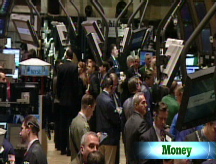









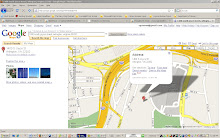













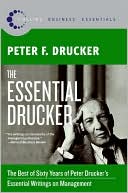































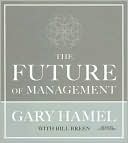



















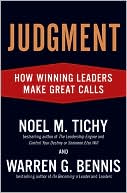






















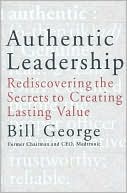




































































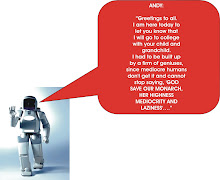



No comments:
Post a Comment